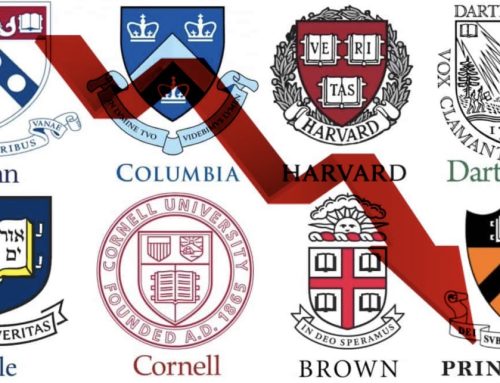Ivy League Class of 2029 Early Admission Statistics
The Harvard Museum is featured at Harvard University beyond greenery.
Some Early Action/Decision cycles show applications rising or falling like the tides: everyone soars or suffers. Other times, things are a bit more ambiguous. The Class of 2029 Early Action/Decision admission statistics across the Ivy League seem closer to this second scenario. Some schools came out on top, some had a low turnout, and others—three of them, to be exact—released no admissions data at all!
That’s right. Only Brown University, Columbia University, Dartmouth College, the University of Pennsylvania, and Yale University shared data on their Early admits this cycle. In an unprecedented move that may signal trends to come, Harvard University joined Cornell University and Princeton University in withholding all data. Even though we at MMT Prep don’t yet have the complete picture of Ivy League Early acceptance data, our famously accurate MMT Prep crystal ball is hard at work interpreting and predicting what this limited information may mean. Rest assured, there’s still plenty for us to dig into!
Mitigating Factors Behind the Class of 2029 Ivy League Admissions Statistics
This year’s Early acceptance data is truly mixed. But why? Anyone who has followed the turmoil of the 2023–2024 academic year knows it was hardly business as usual for America’s top educational institutions. Let’s take a look at some of the biggest factors:
1.Campus Climate and Antisemitism
After a year marked by despicable acts of antisemitism at Ivy League schools, it’s no shock that some institutions saw dips in applications. Brown University and Columbia University, in particular, gained notoriety for poor leadership amid hateful campus incidents. No one should be surprised if prospective students turned away from these schools. By contrast, Dartmouth College, under President Sian Beilock’s poised leadership, actually saw an upswing in applicants—a testament to how handling campus unrest can either alienate or attract students.
2.Shifts in Test-Optional Policies
With the pandemic behind us, Ivy League schools have diverged in their admissions testing requirements. Some schools (Brown, Harvard, Dartmouth) now require standardized tests again, while others (Columbia, Cornell, Penn, Princeton) remain test-optional, and Yale has a “test-flexible” approach. We at MMT Prep applaud institutions that are transparent about how test scores factor into acceptance decisions. However, it’s also evident that some schools may keep test-optional policies mainly to inflate applicant pools with “Squeakers” (students hoping to “squeak in” without test scores), thereby lowering acceptance rates. That Columbia still saw a dip in applications despite a test-optional policy underscores the power of negative PR—applicants notice more than just admissions policies.
3.Aftermath of Affirmative Action Overturn
The Supreme Court’s ruling in June 2023 has sent ongoing shockwaves through higher ed. While all Ivies found workarounds—leaning on Chief Justice Roberts’ language allowing consideration of how race has shaped an applicant’s life—some have begun withholding admissions data not for student well-being, but likely to avoid scaring off applicants with daunting acceptance rates and to dodge media scrutiny over a potentially less diverse incoming class.
Ivy League Class of 2029 Early Action/Decision Acceptance Rates
Ivy League School Class of 2029 Early Action/Decision Applications Class of 2029 Early Action/Decision Acceptances Class of 2029 Early Action/Decision Acceptance Rate
| Ivy League School | Class of 2029 Early Action/Decision Applications | Class of 2029 Early Action/Decision Acceptances | Class of 2029 Early Action/Decision Acceptance Rate |
| Brown University | 5,048 | 906 | 17.95% |
| Columbia University | 5,872 | Not Yet Released | Not Yet Released |
| Cornell University | Not Yet Released | Not Yet Released | Not Yet Released |
| Dartmouth College | 3,550 | Not Yet Released | Not Yet Released |
| Harvard University | Not Yet Released | Not Yet Released | Not Yet Released |
| Princeton University | Not Yet Released | Not Yet Released | Not Yet Released |
| University of Pennsylvania | Over 9,500 | Not Yet Released | Not Yet Released |
| Yale University | 6,729 | 728 | 10.82% |
Brown University
Brown had 5,048 Early Decision applicants to its Class of 2029, admitting 906, a 17.95% ED acceptance rate—its highest in six years. Of the unsuccessful ED applicants, 61.8% were denied, and 17.8% were deferred. Brown’s experience seems to confirm how negative campus events can hurt an institution’s prestige in the eyes of prospective students.
Columbia University
Columbia received 5,872 binding Early Decision applications to the Class of 2029, marking a drop from 6,009 last year—no shock given recent PR setbacks. While Columbia has not disclosed its Early Decision acceptance rate, the downward shift in applications despite a test-optional policy shows that controversies ranging from data misreporting to inadequate campus protections can have a lasting impact.
Cornell University
Cornell has not released its Early Decision admissions data for the Class of 2029. We at MMT Prep will report these numbers once they’re available.
Dartmouth College
Dartmouth received 3,550 Early Decision applications to its Class of 2029, precisely matching last year’s record and surpassing the Class of 2027’s high-water mark by 18%. While Dartmouth hasn’t shared ED results, its strong application volume may reflect President Beilock’s positive leadership in the face of campus unrest.
Harvard University
Harvard has broken with tradition by withholding all Early Action data for the Class of 2029. William R. Fitzsimmons, Harvard’s Dean of Admissions and Financial Aid, declined to provide details to The Crimson. The moment Harvard does release data—if it does—MMT Prep will be first to analyze it.
Princeton University
Princeton also has yet to publish Early Action statistics for the Class of 2029. We’ll post them when available.
University of Pennsylvania
Penn received over 9,500 Early Decision applications to its Class of 2029, surpassing the previous record of 8,500 for the Class of 2028 and 8,000 for the Class of 2027. Penn hasn’t revealed its ED acceptance rate for the Class of 2029 yet.
Yale University
Yale took in 6,729 Early Action applications to its Class of 2029, down from 7,856 last year, admitting 728 students for a 10.82% EA acceptance rate. Compared to last year’s 9.02%, Yale’s acceptance rate shows some improvement, but it’s still higher than the 10.89% mark for the Class of 2027. Of the applicants denied, 71% were rejected and 17% were deferred.
MMT Prep’s Forecast for the Ivy League Class of 2029 Regular Decision Cycle
Eager for Regular Decision results? We at MMT Prep have our famously accurate crystal ball at the ready. Here’s our prediction:
•Brown and Columbia will likely continue to see challenges in maintaining high application volumes and yields.
•Dartmouth will continue to excel, building on its strong leadership in tough circumstances.
•Princeton and Cornell will remain stable relative to the Class of 2028.
•Harvard may take a slight dip compared to previous years.
We’ll see how it all shakes out in April. In any case, schools can’t keep data hidden forever—federal reporting requirements through the Common Data Set will eventually shine a light on the full picture. Stay tuned!




Leave A Comment